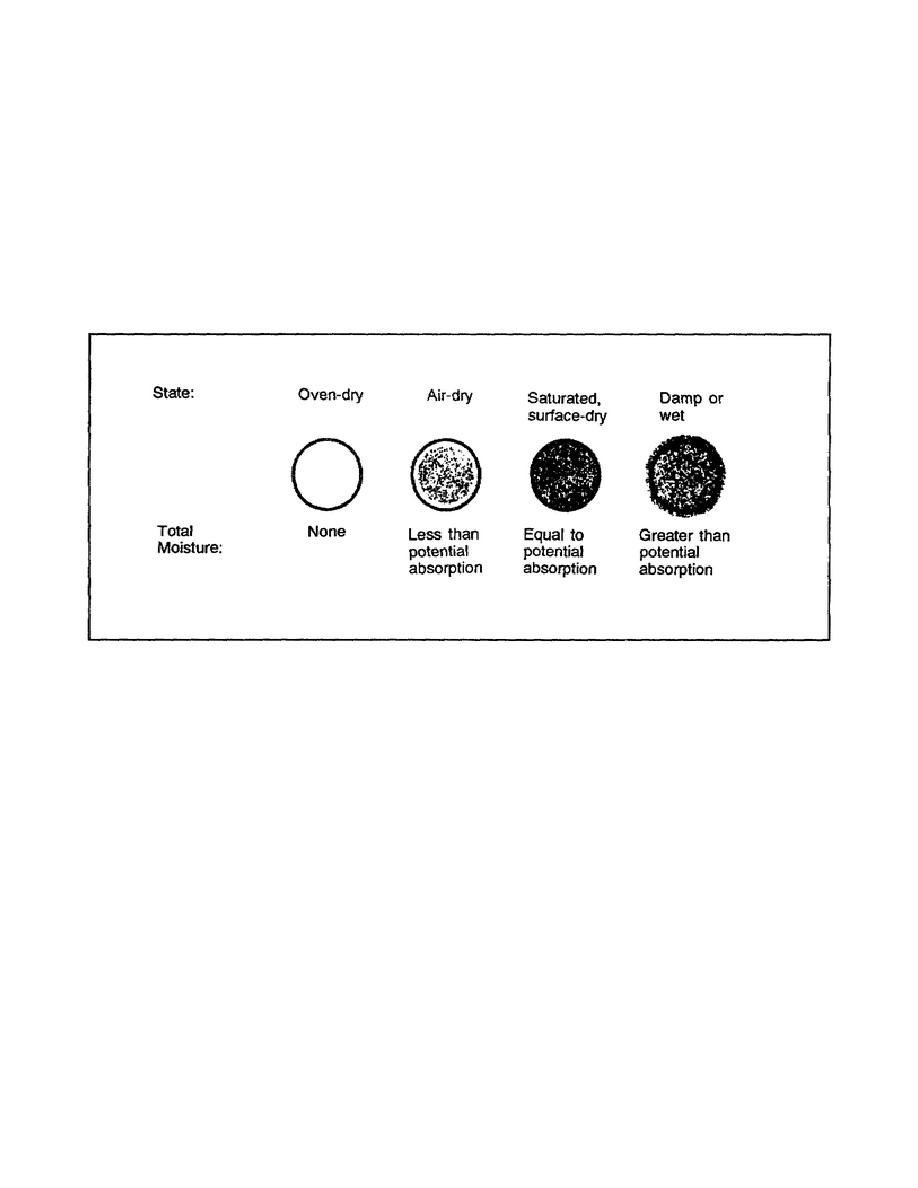
Specific Gravity
The ratio of the density of an aggregate to the density of water. Normal weight aggregates have specific gravities
ranging from 2.4 to 2.9. The internal structure of an aggregate particle is made up of both solid matter and pores
or voids that may or may not contain water. The specific gravities used in concrete calculations are generally for
saturated, surface-dry aggregates, that is, when all pores are filled with water but no excess moisture is present on
the surface.
Absorption and Surface Moisture
Both must be known to control the net water content of the concrete and determine correct batch weights. The
four moisture conditions of aggregates are illustrated in Figure 1-4.
Figure 1-4. Moisture conditions of aggregates.
Oven-dry. Surface and pores are bone-dry and fully absorbent.
Air-dry. Surface is dry but contains some interior moisture and is therefore somewhat absorbent.
Saturate surface-dry (SSD). Surface is dry but pores are saturated--neither absorbing water from nor
contributing water to the concrete mix. The design is based on aggregate in the SSD condition.
Damp or wet. Surface contains an excess of moisture (free surface moisture (FSM)).
Bulking
Bulking is the increase in volume caused by surface moisture holding the particles apart. This occurs when damp
fine aggregate is handled. Figure 1-5 shows the variation in the amount of bulking with moisture content and
grading. Sand is usually delivered in batch quantities in a damp condition. Due to bulking actual sand content
can vary widely in a batch volume, often not in proportion to the moisture content of the sand. Therefore, be very
careful when proportioning by volume. Too much moisture on the aggregate surfaces also adds to the concrete
mixing water. The amount can be considerable, especially the excess water in fine aggregate.
EN5466
1-12



 Previous Page
Previous Page
